
There are more polar bears than people on the Svalbard archipelago, where Anne studies cyanobacteria.
Image: Shutterstock.com
Science among polar bears: a day in the life of an Arctic researcher
Katie Pavid
First published 15 May 2020
Not many jobs put you at risk of running into a polar bear if you want to make a cup of tea, but it's all in a day's work for one Museum scientist.
Dr Anne Jungblut is a microbiologist whose research takes her to some of the coldest and wildest places on Earth. One trip saw her working among bears and reindeer in the Arctic desert, one of the most fragile ecosystems on Earth.
It has never been more important to study the Arctic. Every year, climate change batters the polar regions. Sea ice, the ecosystem on which many species depend, is melting faster than ever before in human history. A recent assessment found that we're likely to see a completely ice-free Arctic in the summer as soon as 2050.
It's clear that the region is witnessing dramatic changes, which are happening almost too quickly for us to track.
Microbiologist Anne is doing her bit to understand the unique Arctic landscape, and document some of the organisms that live there before climate change transforms their habitat. Her work focuses on tiny organisms called cyanobacteria.
Anne is based in the research labs at the Museum, but don't expect to find her there often - she's more likely to be knee-deep in a freezing and muddy pond or sliding her way over a glacier.
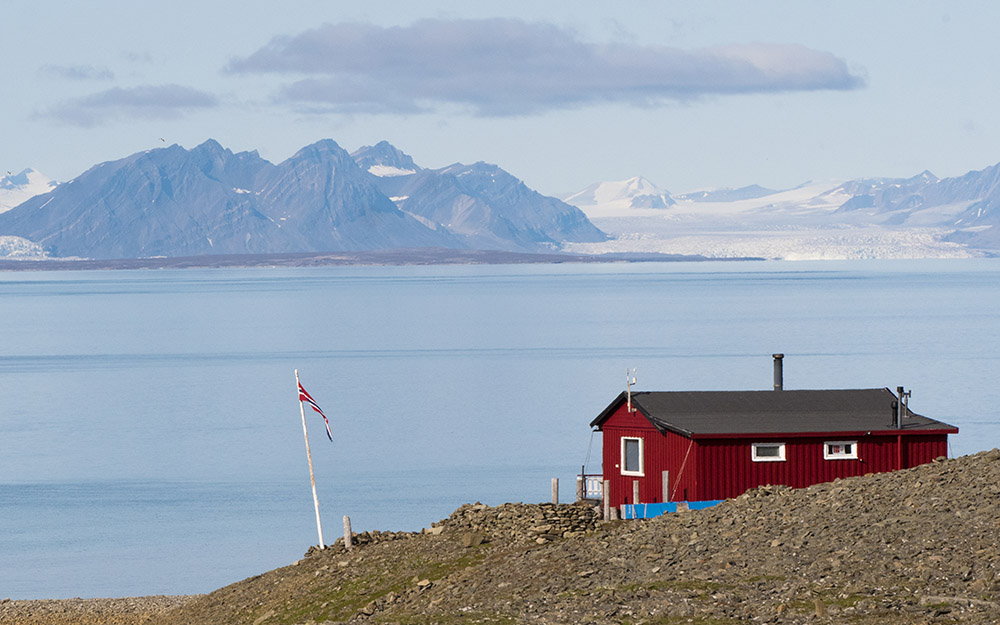
Glaciers like the one shown here are retreating further each year in Svalbard and across the Arctic.
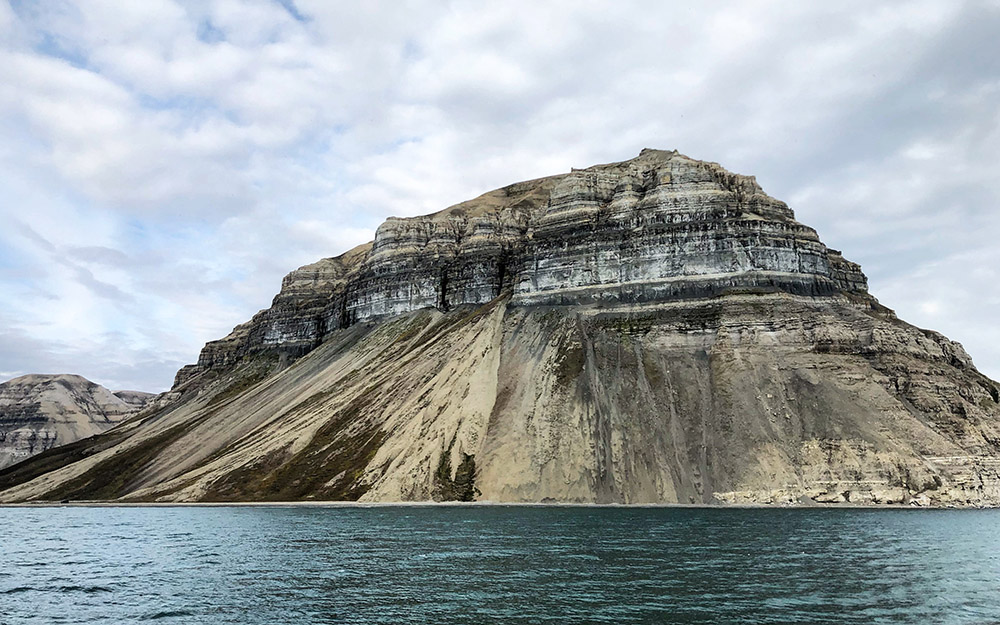
Much of Svalbard is rock and ice. Few plants grow, and the ones that do survive must be hardy.
She recently found herself camped in the heart of polar bear country, among glaciers high in the Arctic Circle on the Svalbard archipelago.
This cluster of islands are governed by Norway and have one of the most northerly towns in the world. It's home to more polar bears live than people, and much of the area is uninhabited save for seasonal researchers and visitors.
Winter temperatures can drop to -20°C and the Sun doesn't rise for four months. It sets for the final time in October, and the polar winter keeps the islands in perpetual darkness until the first sunrise of the year in March.
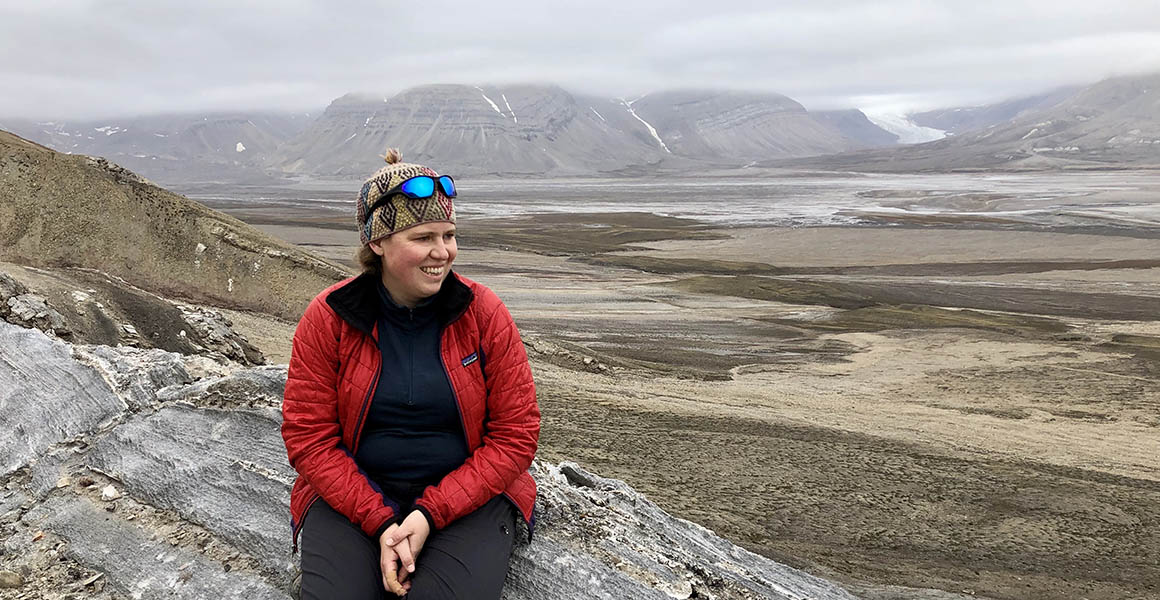
Anne takes a break from collecting samples after a day of Arctic fieldwork. The landscape you can see behind her is typical of the environment she works in on Svalbard.
'It's an incredible landscape to work in', says Anne. 'The landscape is vast and barren and just breathtaking to visit, with its high mountains, glaciers, lakes and long stretches of coastlines.
'There are few points of reference, making it difficult to get a sense of scale and distance in the absence of trees and buildings. The sky sits like a lid on top of the landscape, and large clouds can cast shadows or hide mountain peaks for days. The weather can change rapidly from sunshine to rain, fog and even snow within a single day.
'The light is very different to the light in the UK. There is 24-hour daylight in summer, which can be exhilarating, but you also must work harder to maintain a healthy work-sleep rhythm.'
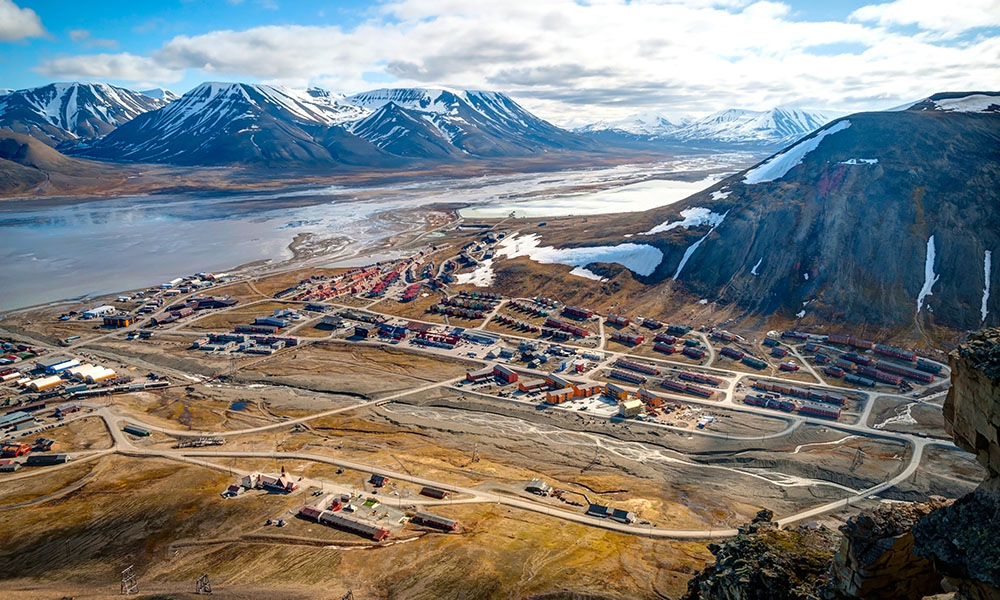
An aerial view of the main town on the archipelago, Longyearbyen. Just a few thousand people live here permanently.
Image: Shutterstock.com
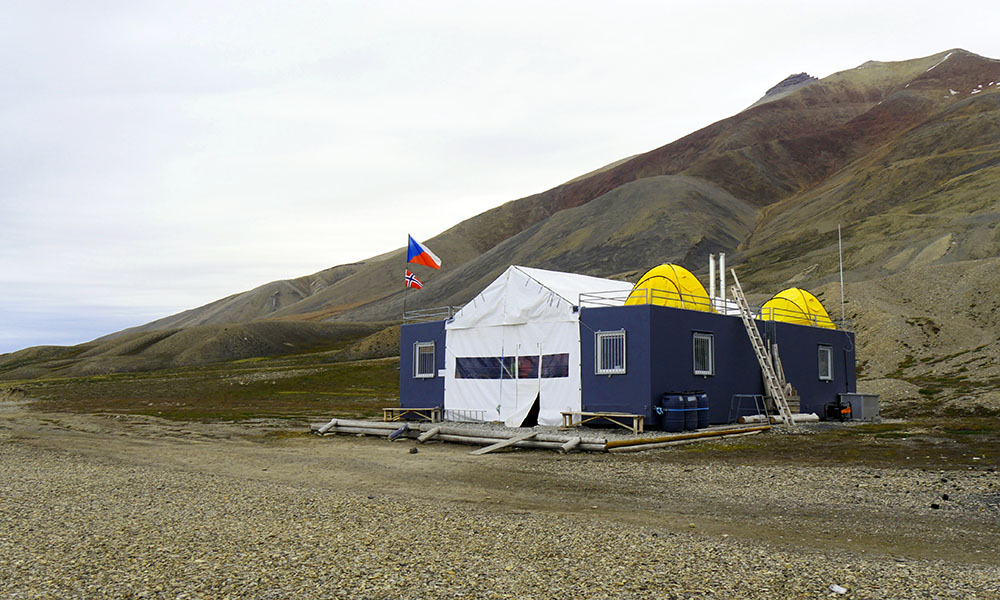
Anne's remote camp, consisting of a main tent for working and eating, and four secure pods for lab facilities and sleeping.
The camp is run by the Czech Rebulic Centre for Polar Ecology.
The majority of people who live on Svalbard are in the main town, Longyearbyen. It has a permanent population of just a few thousand.
But Anne had to venture much further into the wildnerness to find what she was looking for.
At Anne's research camp, facilities are minimal. Most of the team survive on one shower a week, using a homemade tap that spouts freezing glacier run-off. From the camp's windows, all Anne can see are ice and Earth. No trees dot the landscape, and animals are few and far between, save from the occasional Arctic fox skittering past the tent.
No one is allowed outside without a gun and safety flares, due to the risk of encountering a polar bear. Even running to the outside tap means checking for bears before you leave the safety of the tent, and the sleeping pods have metal bars on the windows for extra protection against predators.
But Anne isn't interested in the largest land carnivore in the world. She's focused on some of the region's smallest life forms, bacteria that obtain their energy through photosynthesis. You might know them better as blue-green algae or cyanobacteria.
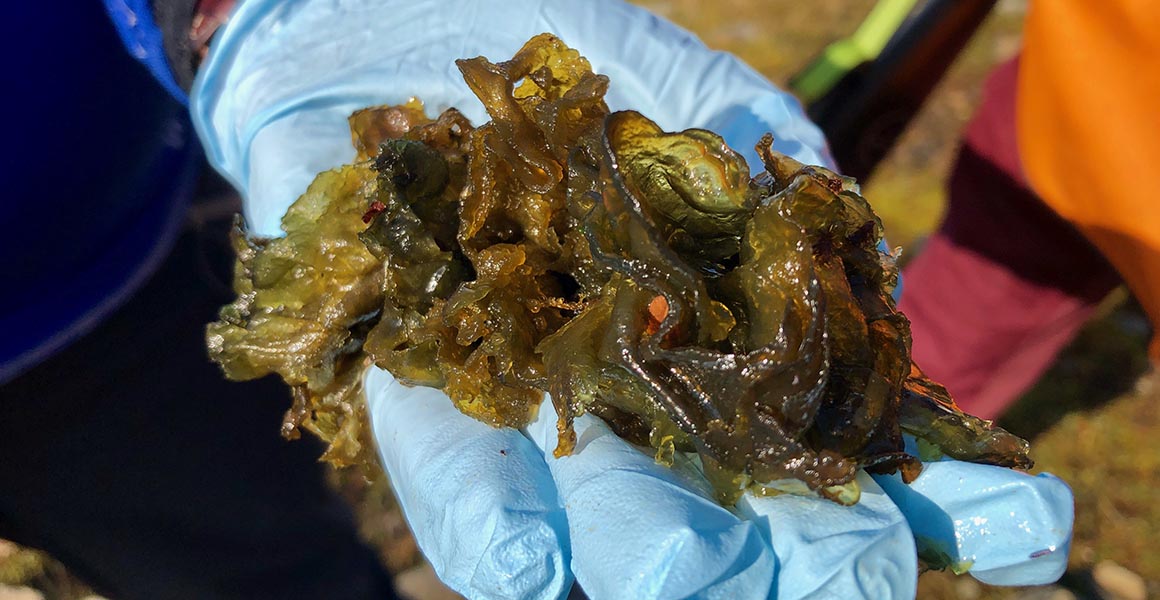
This is a genus of cyanobacteria called nostoc, often found in a jelly-like mass. It can lie dormant for long periods of time, which makes it well suited to the extreme Arctic environment. One sample even survived for a year in outer space and started regrowing when it came back to Earth.
Adventures in an ice desert
These bacteria live in the ocean, lakes, rivers, soil and even rocks, and were some of the first forms of life ever to appear on Earth.
Although some cyanobacteria have just one cell, they use light to make their energy just like plants do. They can be found in just about every place on the planet that sunlight reaches, although most people never pay much attention to them.
It's important to know how they function, because they form the bottom of food webs and support much larger animals and plants.
Cyanobacteria also helped to form Earth's atmosphere. They are more than 2.5 billion years old, making them one of the oldest life forms and the first organisms able to produce oxygen by photosynthesis.
Studying them in places like Svalbard is particularly useful because the cyanobacteria often have to work harder to survive.
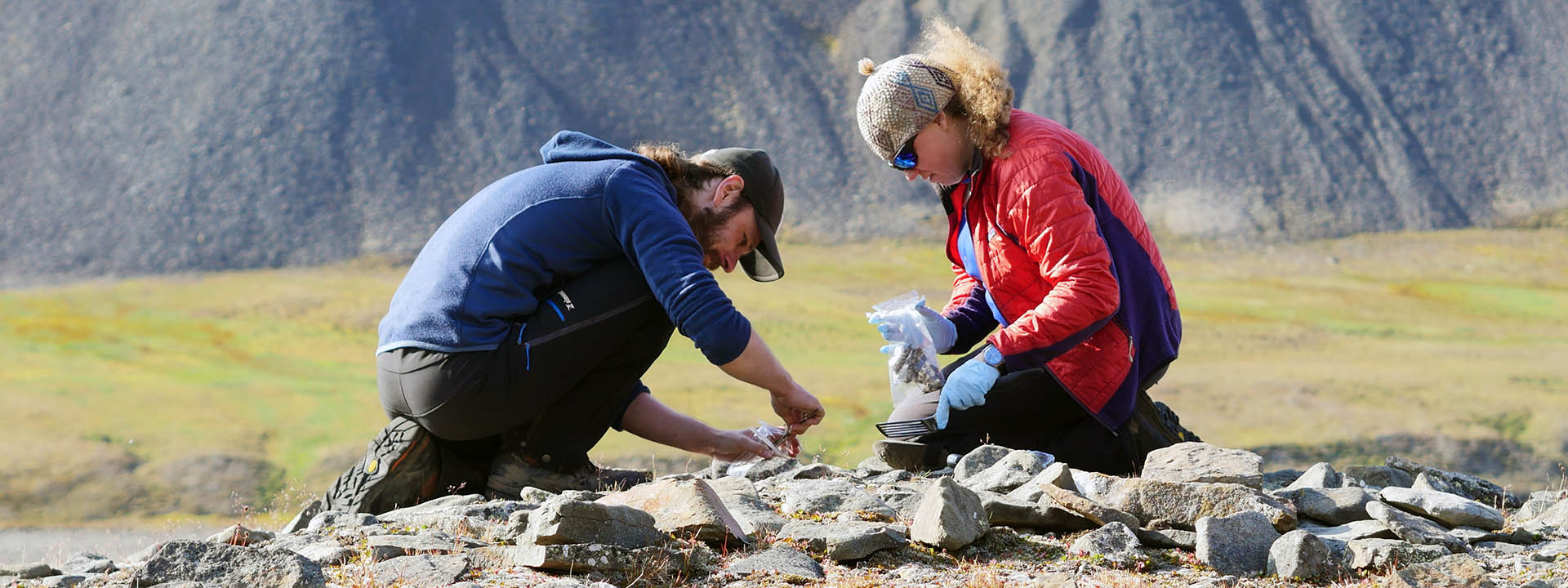
Anne bags up samples with her research partner, Dr Dennis Nürnberg from the Free University of Berlin.
Anne says, 'I was particularly interested to work in Svalbard because the environment is so extreme. It's completely dark for half the year, and the temperatures are freezing. Other extreme features can be high ultraviolet radiation during summer and lack of nutrients. Not every organism can live here - there is no grass and only a few plants - but microbes are really well adapted. I want to see how life can survive in this place.
'Some of the most interesting things to look at are soil crusts. It is incredible when we hike through these barren landscapes made of rocks, ice and water, and then suddenly find all sorts of small plants and microscopic life. There is even one type of tree, the Arctic willow, which only grows a centimetre tall and looks more like a creeping plant than a tree.
'The ground is covered in these soil crusts, they are communities made of mosses, lichen, algae and cyanobacteria. Even though it looks like nothing is there when you look under your feet, it's actually teeming with life.'
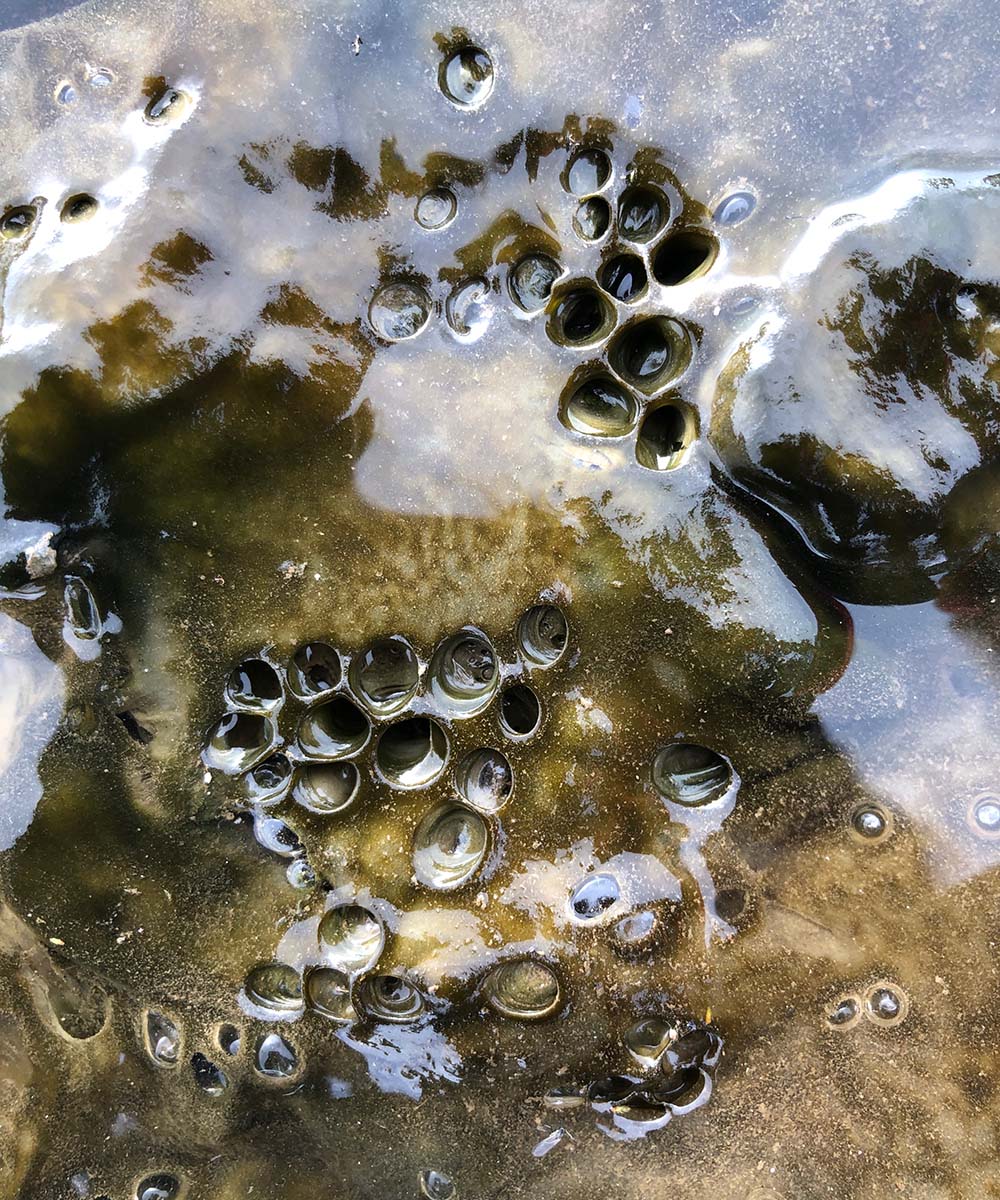
Cyanobacteria are tiny organisms, and lots of them have just one cell. They grow together on rocks and in water. Here, the bubbles show where oxygen is being given off.
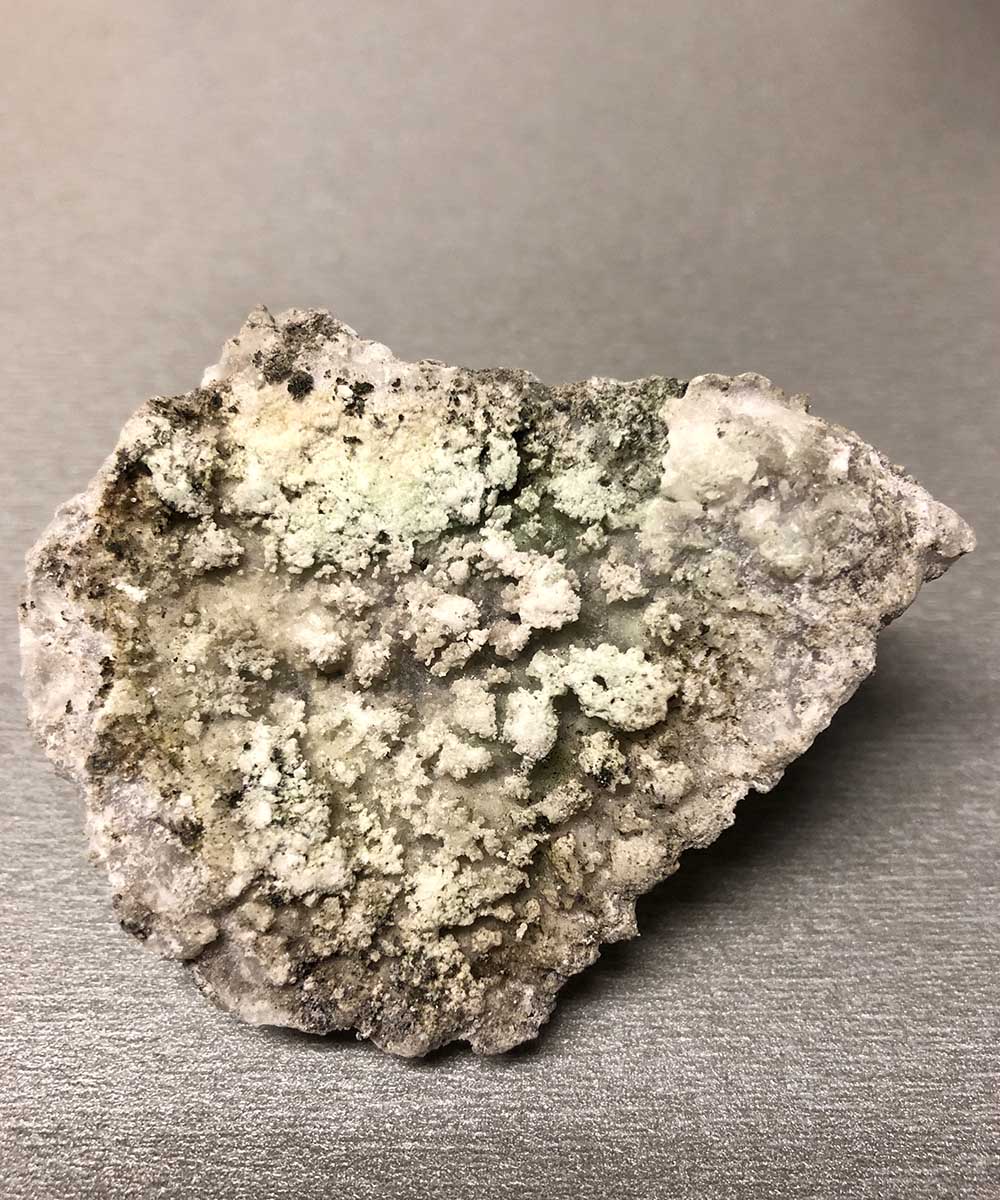
This is a soil crust, a living community containing bacteria, algae, moss, lichen and fungi. The blue-green colour is what Anne is looking for.
Cyanobacteria superheroes
Svalbard receives so little rainfall it is classified as a polar desert. Add to that the darkness during the winter, and life becomes extremely hard for any organism to thrive.
By examining how these bacteria can survive the extremes of the Arctic, we can learn a lot. We can understand more about how life evolves, how it started, and what its limits are, as well as determining how food webs work.
Combining research on microscopic life together with our understanding of polar bears, foxes, birds and plants will help to get a better understanding of the overall biodiversity in the Arctic and the ecology of these unique, permanently cold environments.
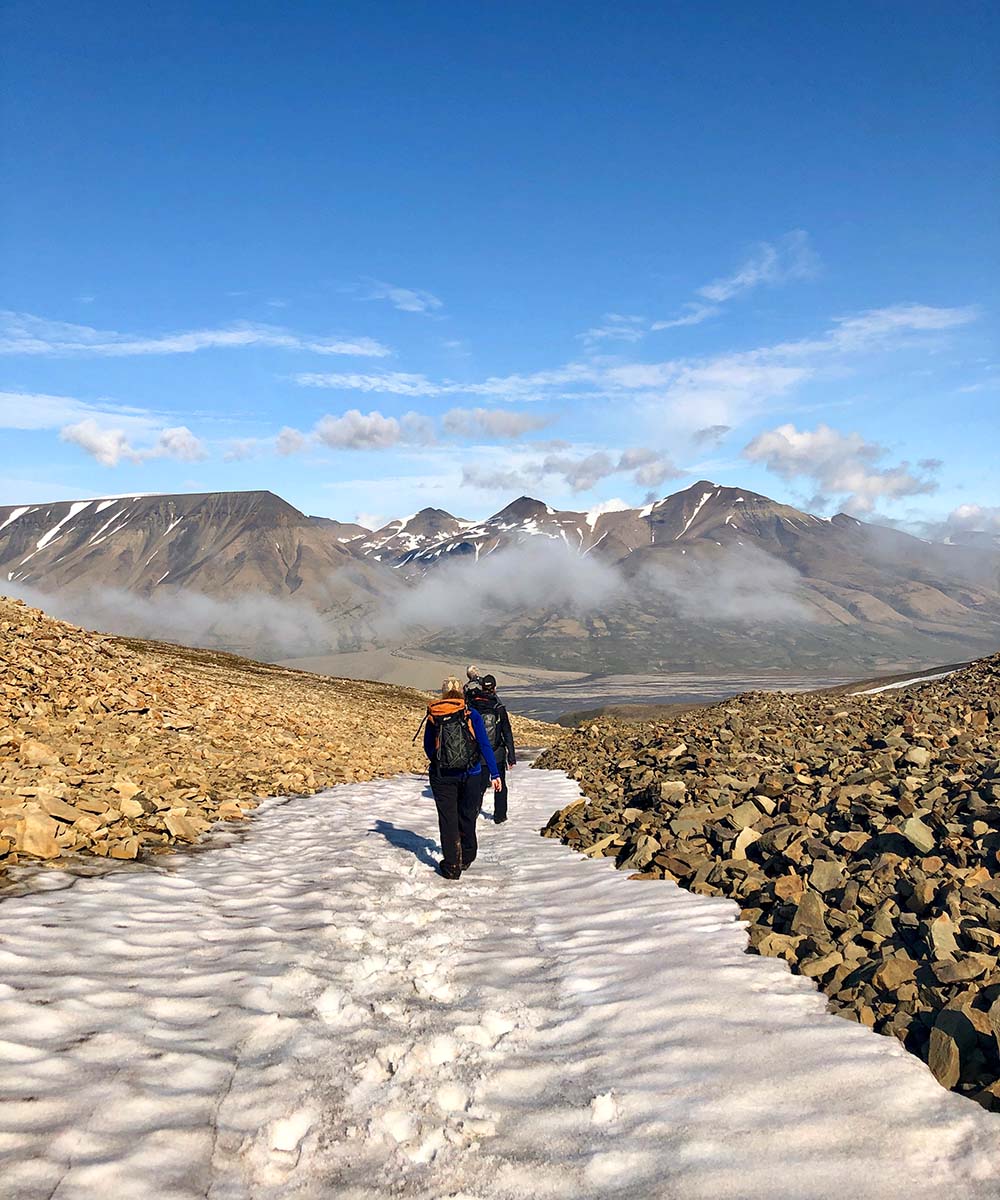
A day in the field can involve hours of hiking to find the right spot to collect samples. Here, Anne crosses the top of a glacier on her wayto a new location.
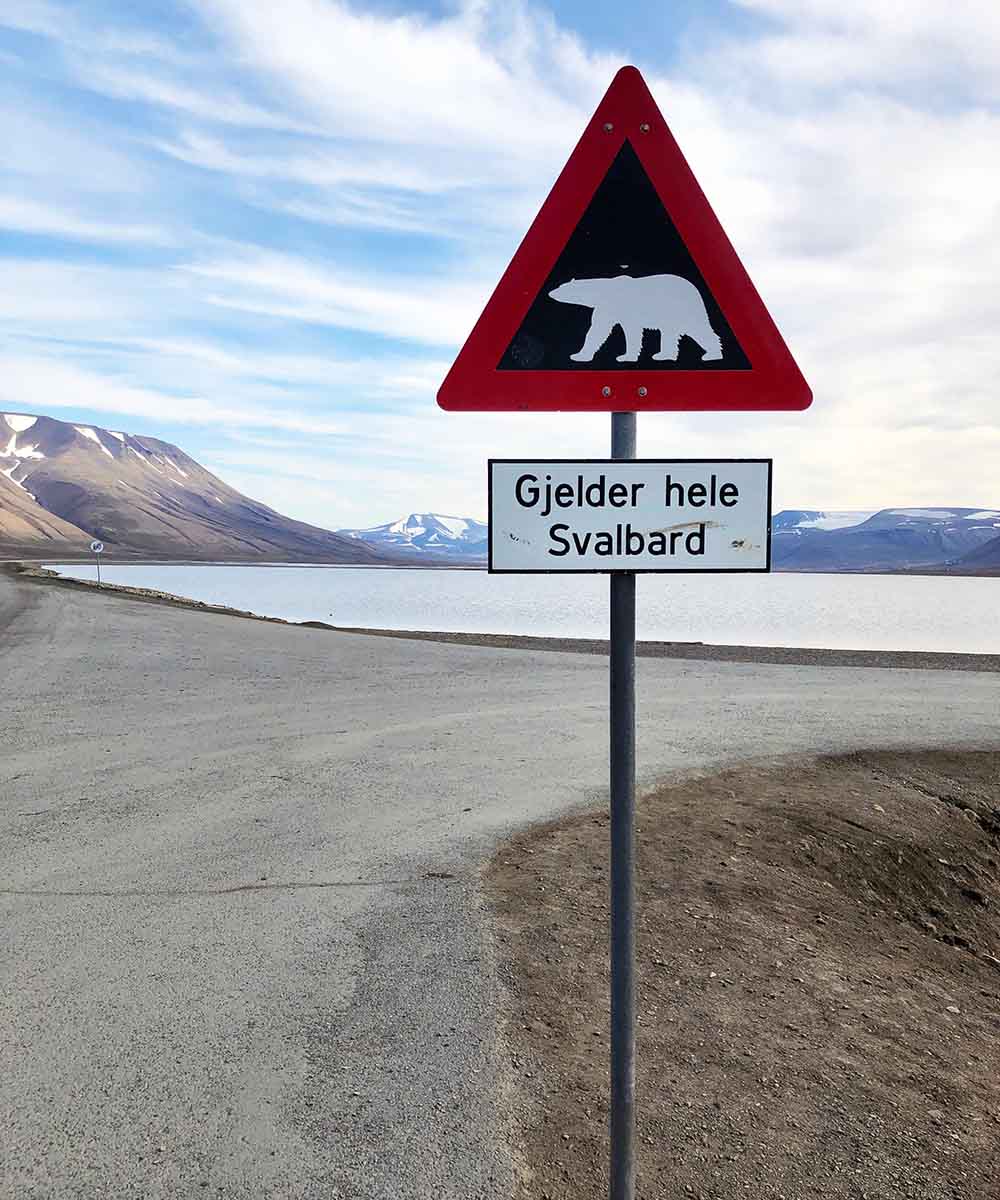
A sign on the main road out of Longyearbyen warns travellers of the polar bear risk.
The science
A typical day in the field starts with coffee, planning, and getting set up for a hike.
Anne says, 'Finding samples in Svalbard meant we were walking up hills and over glaciers to find suitable sampling sites. The beginning of an expedition is always tense and thrilling, as we get to explore a new region of the Arctic. We're also anxious about whether we will be able to find the habitats we set out to study.
'The first days are also about getting a feel for the terrain. In Svalbard we were lucky, we found rich soil crust and rock-dwelling cyanobacteria on our first day being the field camp. Once we have more of an understanding on what we can expect to collect, we develop a sampling strategy that will allow us to address our scientific questions.'
Once collected, samples are taken back to a lab and examined under a microscope. Anne and her colleagues can then add them to ethanol or another solvent, and start to learn more about the types of pigments and chemicals inside the bacteria.
Other samples are frozen and taken back to the Museum for DNA sequencing, which will allow rapid identification of the richness and relative abundances of cyanobacteria and other microscopic organisms.
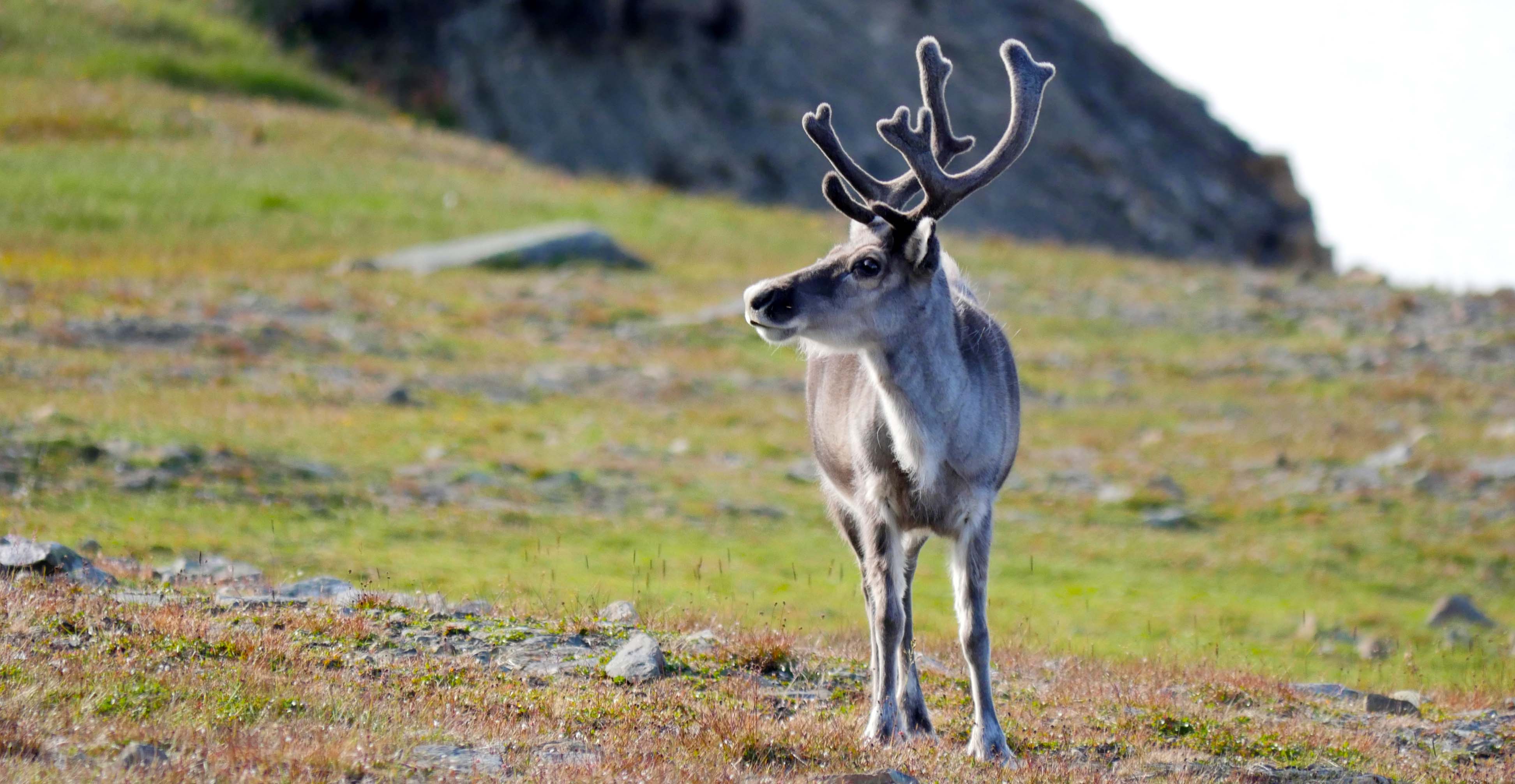
Cyanobacteria form the bottom of the food web, supporting other animals and plants higher up the food chain.
Our collections: a library of life
Anne often compares her samples to similar examples found in the Museum collections, which were collected during the nineteenth and twentieth centuries - a time when the polar regions were largely unaffected by human activity.
Sadly, climate change could have a serious detrimental effect on these delicate ecosystems.
Anne says, 'It is important to study cyanobacteria because rapid warming has been predicted for the polar regions. Microbial biodiversity including cyanobacteria forms the basis of food webs and supports biogeochemical cycling, and changes in microbiology might lead to ecosystem changes in the future.
'Using Museum collections allows us to establish baseline information that will help to detect and track changes in biodiversity in response to climatic-driven environmental change in the future.'
The cyanobacteria that live in the Arctic could also help us grow crops more efficiently one day, as they use a newly discovered form of chlorophyll that can make use of infrared light.
Crops of the future may be able to use a broader spectrum of light to make energy. This is increasingly important as the global population puts pressure on Earth's resources.
Beyond that, by studying the limits of life and how life can adapt to extreme conditions on Earth, cyanobacteria could help planetary scientists who are searching for life in space. For example, life on Mars will also have to survive extreme temperatures and light conditions.
So, although they are microscopic, cyanobacteria could give humans of the future a very big helping hand.
Read more
- Find out more about climate change.
- Discover Anne's work at the other end of the planet.

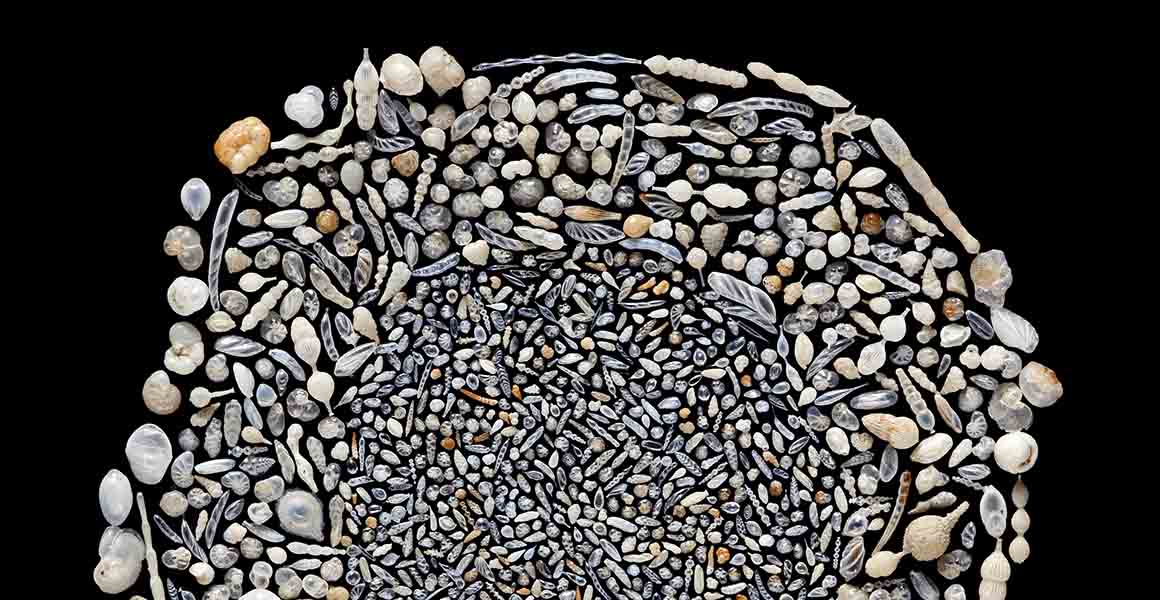
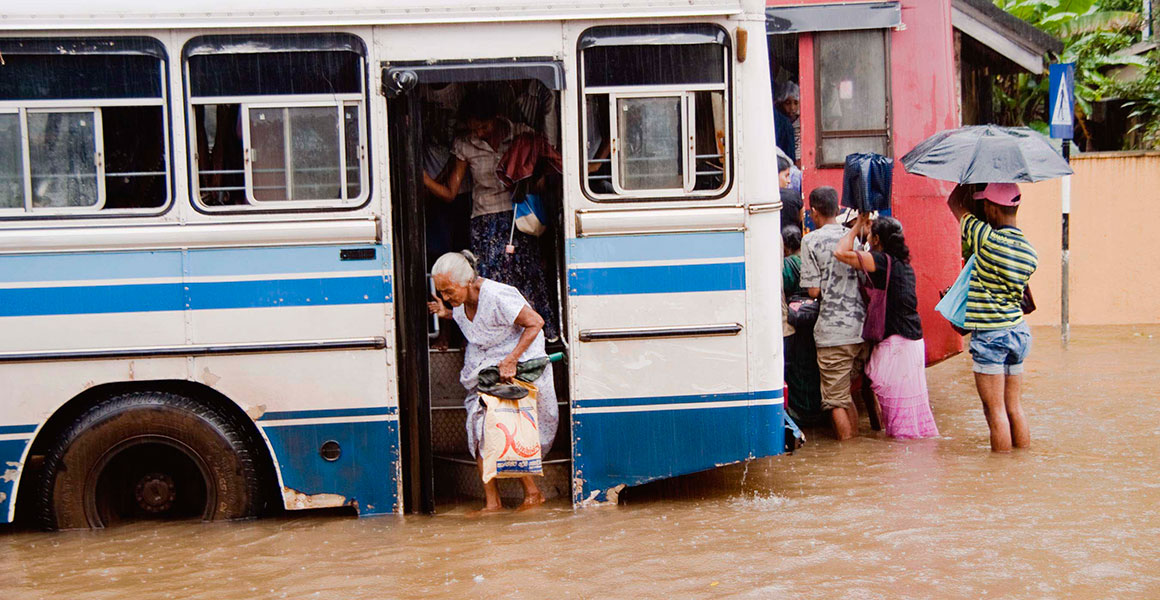
Don't miss a thing
Receive email updates about our news, science, exhibitions, events, products, services and fundraising activities. We may occasionally include third-party content from our corporate partners and other museums. We will not share your personal details with these third parties. You must be over the age of 13. Privacy notice.
Follow us on social media